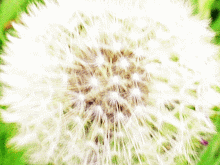
... //
first, over black, we hear the sound of a light rain.
1. a (wo)man's voice
i'm not a poet. i've never moved anyone with my words.
then, still over black, we hear the sound of a sudden organic beat.
maybe that's why they chose me.
1. a (wo)man's voice
i'm not a poet. i've never moved anyone with my words.
then, still over black, we hear the sound of a sudden organic beat.
maybe that's why they chose me.
// ...
A /
Access
Aesthetics
Air
Alarm
Algorithm(ic)
Alternative
Art
Audience
Autumn
B /
Behavior
Biology
Blitzkrieg
Blind Spot
Body
Bureaucracy
C /
Calendar
Canon
Capitalism
Celebrity
Change
Chamaeleon
Choice
Choreography
Citizen(ship)
City
Civilization
Class
Collapse
Colonialism
Commodity
Communication
Community
Conservatism
Consumption
Contemporary
Copy
Country
Culture
D /
Aesthetics
Air
Alarm
Algorithm(ic)
Alternative
Art
Audience
Autumn
B /
Behavior
Biology
Blitzkrieg
Blind Spot
Body
Bureaucracy
C /
Calendar
Canon
Capitalism
Celebrity
Change
Chamaeleon
Choice
Choreography
Citizen(ship)
City
Civilization
Class
Collapse
Colonialism
Commodity
Communication
Community
Conservatism
Consumption
Contemporary
Copy
Country
Culture
D /
Deconstruction
Defenestration
Democracy
Descriptor
Desire
Development
Diaspora
Difference
Disability
Discipline
Discourse
Distribution
E /
Defenestration
Democracy
Descriptor
Desire
Development
Diaspora
Difference
Disability
Discipline
Discourse
Distribution
E /
Economy
Education
Elite
Ellipse
Emotion
Empirical
Environment / Ecology
Equality
Equinox
Ethnicity
Everyday
Evaluation
Evolution
Exodus
Experience
Euskera
F /
Education
Elite
Ellipse
Emotion
Empirical
Environment / Ecology
Equality
Equinox
Ethnicity
Everyday
Evaluation
Evolution
Exodus
Experience
Euskera
F /
Faith
Family
Fashion
Feminism
Fetish
Food
Formation
Frame(s)
Freedom
Fundamentalism
G /
Family
Fashion
Feminism
Fetish
Food
Formation
Frame(s)
Freedom
Fundamentalism
G /
G-Force
Gay and Lesbian
Gender
Gene / Genetic
Generation
Gift
Globalization
Government
H /
Gay and Lesbian
Gender
Gene / Genetic
Generation
Gift
Globalization
Government
H /
Hailstorm
Heritage
History
Holocaust
Home
Human
Human Rights
Hybrid
I /
Heritage
History
Holocaust
Home
Human
Human Rights
Hybrid
I /
Identity
Ideology
Image
Indifference
Indigenous
Individual
Industry
Information
Intellectual
Interest
Intermezzo
Invent
J /
Ideology
Image
Indifference
Indigenous
Individual
Industry
Information
Intellectual
Interest
Intermezzo
Invent
J /
Justice
Java
K /
Java
K /
Karoshi
Knowledge
L /
Knowledge
L /
Laïcité
Level
Liberalism
Logistics
Logarithm(ic)
Logo
M /
Level
Liberalism
Logistics
Logarithm(ic)
Logo
M /
Management
Marginal
Market
Mass
Materialism
Mathematics
Media
Measure
Memory
Meridian
Metric
Method
Mobility
Modern
Mode
Moebius Strip
Movements
Multiculturalism
N /
Marginal
Market
Mass
Materialism
Mathematics
Media
Measure
Memory
Meridian
Metric
Method
Mobility
Modern
Mode
Moebius Strip
Movements
Multiculturalism
N /
Narrative
Nation
Nature
Network
Noise
Normal
O /
Nation
Nature
Network
Noise
Normal
O /
Objectivity
Oblique
Ontology
Organization
Original Sin
Other
Orientalism
P /
Oblique
Ontology
Organization
Original Sin
Other
Orientalism
P /
Panic
Participation
People
Person
Place
Political Correctness
Policy
Popular
Pornography
Postcolonialism
Postmodernism
Poverty
Power
Pragmatism
Privacy
Public
Q /
People
Person
Place
Political Correctness
Policy
Popular
Pornography
Postcolonialism
Postmodernism
Poverty
Power
Pragmatism
Privacy
Public
Q /
Quantity
Queer
Quality
R /
Queer
Quality
R /
Race
Radical
Reason
Reform and Revolution
Relativism
Representation
Resistance
Risk
Rupture
S /
Radical
Reason
Reform and Revolution
Relativism
Representation
Resistance
Risk
Rupture
S /
Sarajevo
Science
Script(s)
Season(s)
Secular
Self
Sense
Sexuality
Share(holder)
Sign
Sleep
Socialism
Society
Solstice
Sovereignty
Space
Spectacle
Stake(holder)
Strategy
State
Subject
Syncope
System
T /
Science
Script(s)
Season(s)
Secular
Self
Sense
Sexuality
Share(holder)
Sign
Sleep
Socialism
Society
Solstice
Sovereignty
Space
Spectacle
Stake(holder)
Strategy
State
Subject
Syncope
System
T /
Taste
Technology
Territory
Text
Theory
Therapy
Time
Tolerance
Topology
Tourism
U /
Technology
Territory
Text
Theory
Therapy
Time
Tolerance
Topology
Tourism
U /
Ultra
Unconscious
Utopia
V /
Unconscious
Utopia
V /
Value
Virtual
W /
Virtual
W /
Water
Welfare
West, the
Work
Writing
X /
Welfare
West, the
Work
Writing
X /
X
xxx
X-Chromosome
Y /
xxx
X-Chromosome
Y /
Yesterday
Y-Chromosome
Youth
Z /
ZenithY-Chromosome
Youth
Z /
Zero
Zone
Zone





